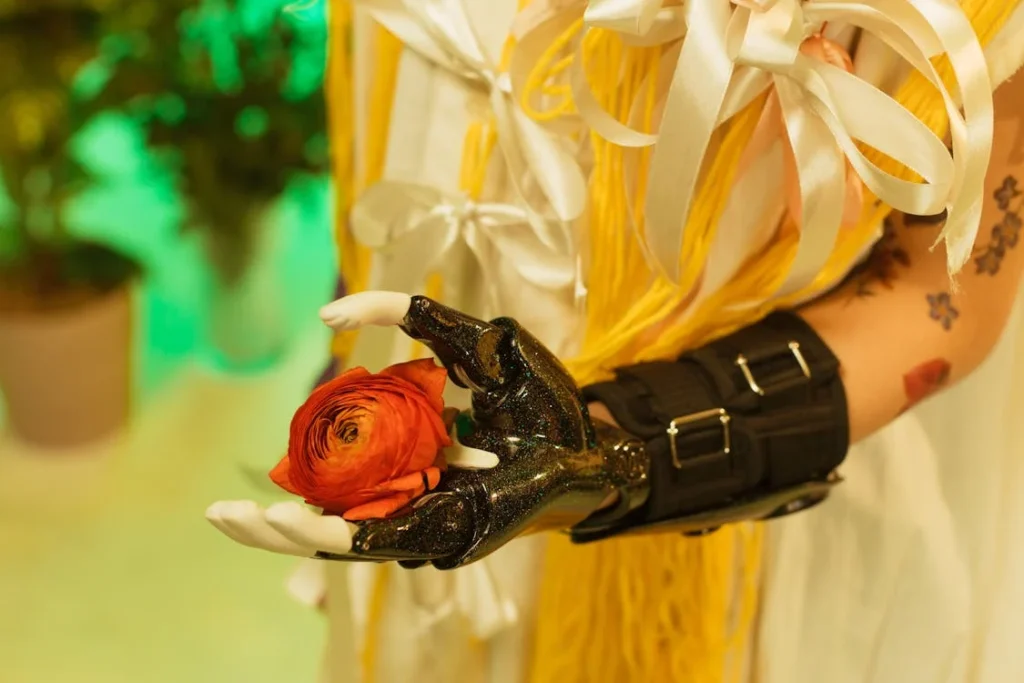The human body is an incredible machine, with limbs that move fluidly, adjust to different terrains, and perform tasks with precision. For individuals with limb loss, prosthetic technology has long aimed to replicate this natural movement. While traditional prosthetics provided function, they often lacked the intuitive control and responsiveness of a biological limb. But with the rise of bionic prosthetics, things have changed.
Today, bionic limbs can do more than just replace lost function—they can move with greater accuracy, adapt to real-world conditions, and respond to a user’s intent almost instantly. Advanced sensors, artificial intelligence, and robotics have made it possible for bionic prosthetics to mimic natural movement better than ever before. They are now smarter, faster, and more intuitive, giving users a seamless experience that closely mirrors their original limb.
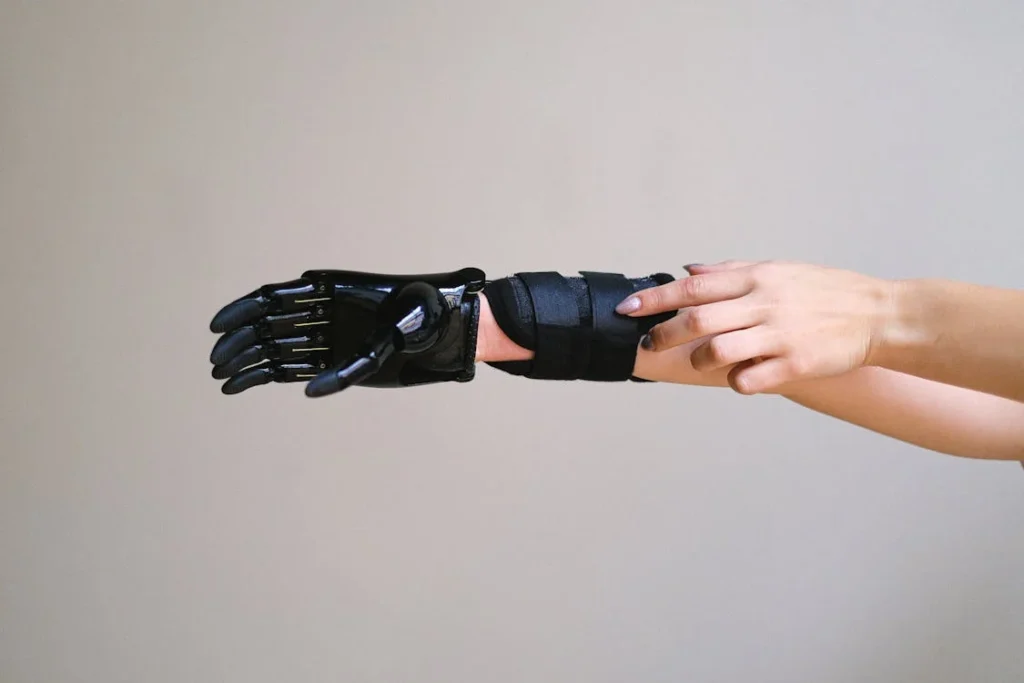
The Evolution of Bionic Prosthetics: From Basic Function to Natural Motion
Prosthetic limbs have been around for centuries, but early designs were simple and mechanical. Wooden legs, metal hooks, and passive artificial limbs helped with basic movement but lacked fluidity and control.
Over time, prosthetics evolved with lighter materials and better designs, allowing for improved mobility. However, they still required conscious effort to use, making everyday tasks more difficult.
Bionic prosthetics changed everything. By incorporating sensors, robotics, and advanced software, these prosthetic limbs can now respond to movement signals from the body.
They are no longer just passive tools; they are interactive extensions of the user. The shift from mechanical to bionic technology means that prosthetic users can now walk more naturally, grip objects with precision, and even feel sensations through sensory feedback systems.
The goal of bionic prosthetics is not just to restore mobility but to make movement as effortless as possible. Unlike traditional prosthetics, which rely on manual adjustments and repeated training, bionic limbs work with the body’s natural mechanics.
This allows users to regain confidence in their movements, whether they are walking down a crowded street, climbing stairs, or holding delicate objects.
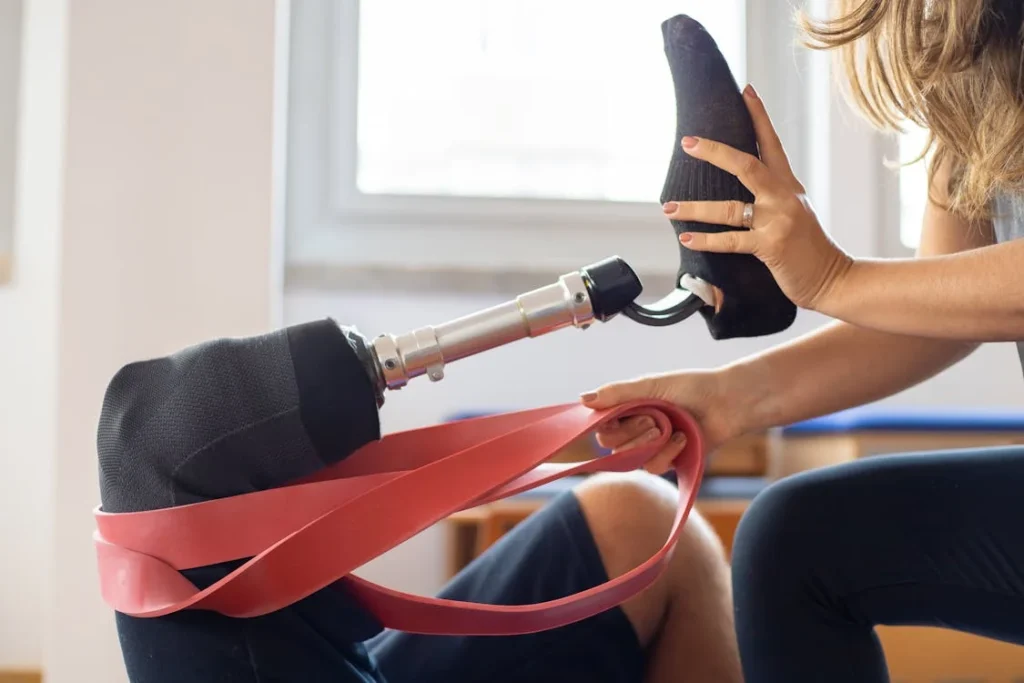
How Bionic Prosthetics Replicate Natural Movement
Bionic prosthetics achieve lifelike motion by using advanced technology that closely mimics how the human body naturally moves. The key to this lies in a combination of sensors, artificial intelligence, robotics, and user control systems.
These elements work together to create a prosthetic limb that responds in real-time, making movements feel smoother and more natural.
Reading Signals from the Body
One of the most impressive advancements in bionic prosthetics is the ability to read and interpret signals from the user’s body. In a natural limb, movement begins in the brain.
The brain sends electrical signals through the nervous system to muscles, instructing them to contract and create movement. In individuals with limb loss, these signals still exist, even if the limb is no longer there.
Bionic limbs use electromyography (EMG) sensors to detect these signals from the remaining muscles in the residual limb. These sensors are placed inside the prosthetic socket and pick up electrical activity when the user attempts to move.
The prosthetic then translates these signals into motion, allowing the user to control their artificial limb much like they would a natural one.
Some of the latest bionic limbs go even further by integrating brain-machine interfaces (BMIs), which allow users to control the prosthetic directly with their thoughts.
These systems use electrodes implanted in the nerves or even in the brain itself to create a seamless connection between the nervous system and the artificial limb.
While still in the early stages, this technology represents a future where bionic limbs will be nearly indistinguishable from biological ones in terms of control.
Microprocessors for Real-Time Adjustments
Traditional prosthetic limbs often required users to consciously adjust their movements to maintain balance or walk smoothly. This made movements feel unnatural and sometimes exhausting.
Bionic prosthetics, however, solve this issue by using microprocessors that continuously analyze motion and make real-time adjustments.
For example, a bionic leg equipped with microprocessors can detect walking speed, terrain changes, and even shifts in body weight.
If the user transitions from walking on flat ground to climbing stairs, the prosthetic automatically adjusts its movements to accommodate the change. This eliminates the need for manual corrections and makes walking feel much more fluid.
Some advanced bionic knees and ankles also have gyroscopes and accelerometers, which help detect movement patterns. These sensors provide feedback to the prosthetic, allowing it to adapt and react just like a natural limb would.
As a result, users experience better balance, reduced fatigue, and a more natural gait.
Adaptive Grip Control in Bionic Hands
Bionic hands have come a long way from simple mechanical grips. In the past, prosthetic hands could only open and close in a fixed way, making delicate tasks difficult.
Modern bionic hands now feature adaptive grip technology, allowing users to hold objects with the right amount of force.
This is possible due to pressure sensors embedded in the fingertips of the prosthetic. These sensors detect how much force is being applied and adjust accordingly.
For example, if a user picks up an egg, the prosthetic hand will sense the fragility of the object and reduce its grip strength to avoid breaking it. On the other hand, if the user needs to lift a heavy object, the bionic hand will apply a firmer grip.
Some of the most advanced bionic hands even incorporate pattern recognition AI, which learns the user’s movement habits over time. The more the prosthetic is used, the better it gets at predicting and replicating natural hand movements.
This makes tasks like typing, holding a pen, or using utensils feel more intuitive.
Prosthetics That Provide Sensory Feedback
One of the biggest differences between natural limbs and artificial ones is the ability to feel. A biological limb provides continuous feedback about temperature, texture, and pressure. Without this sensory input, using a prosthetic can sometimes feel disconnected.
However, researchers have now developed sensory feedback systems for bionic limbs that restore some level of feeling. These systems work by sending signals back to the nervous system whenever the prosthetic interacts with an object.
Some bionic limbs use vibration motors or electrical stimulation to recreate the sensation of touch, allowing users to “feel” what they are holding.
A more advanced method involves neural implants that directly stimulate the nerves in the residual limb, providing even more realistic sensations.
Users with these systems report being able to feel different textures, sense pressure changes, and even experience warmth or cold. This development is a major breakthrough in making prosthetic limbs feel truly natural.
The Role of Artificial Intelligence in Movement Prediction
Artificial intelligence is playing a growing role in making bionic prosthetics more intuitive. Some of the latest bionic limbs come with AI-powered algorithms that analyze movement patterns and predict what the user wants to do next.
For example, an AI-enhanced bionic knee can anticipate when the user is about to take a step and adjust its movement accordingly. Similarly, a bionic hand with AI can recognize different hand gestures and automatically select the appropriate grip type.
This predictive ability reduces reaction time and makes using the prosthetic feel second nature.
As AI continues to evolve, bionic limbs will become even more efficient at mimicking the subconscious movements of a natural limb. This will further reduce the learning curve for new users and improve overall mobility.
Why Bionic Prosthetics Feel More Natural Than Ever
The combination of muscle signal detection, microprocessors, adaptive sensors, sensory feedback, and AI-powered learning has transformed bionic prosthetics from simple mechanical replacements into highly advanced extensions of the human body.
Today’s bionic limbs allow for smoother, faster, and more precise movements, making them the closest thing to a real limb that technology has ever achieved.
These advancements are not just improving mobility—they are restoring independence, confidence, and quality of life for people with limb loss.
Whether it’s walking with a more natural stride, gripping objects with ease, or even regaining the sense of touch, bionic prosthetics are making movement feel effortless again.
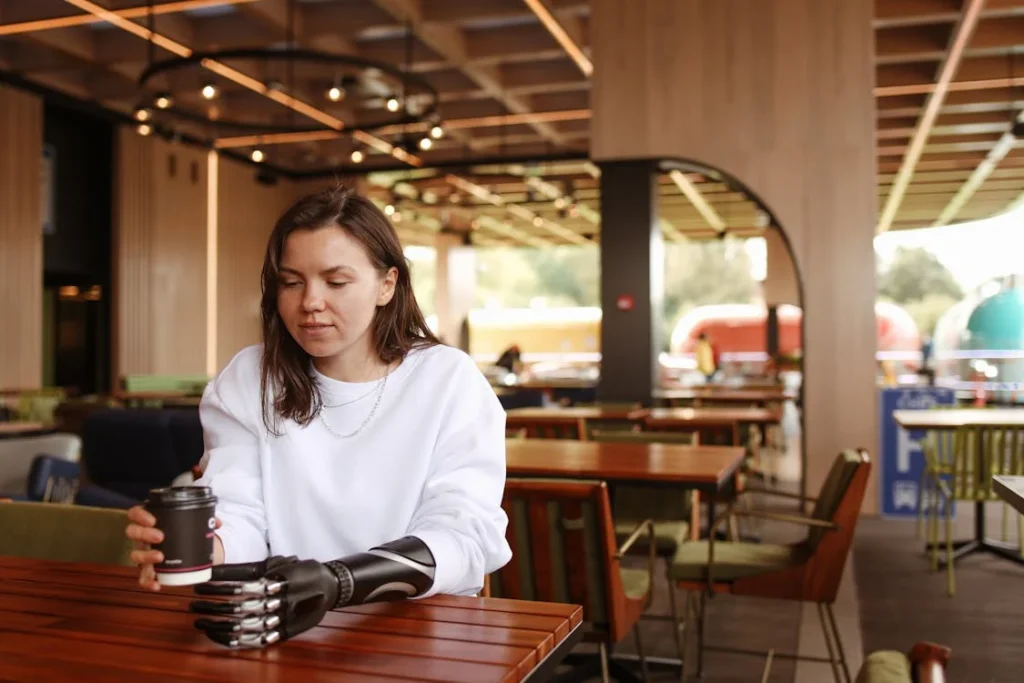
The Real-World Impact of Bionic Prosthetics on Users
The advancements in bionic prosthetic technology are not just theoretical—they are changing lives in real, meaningful ways.
People with limb loss are now able to move more naturally, engage in everyday tasks with ease, and even return to careers and sports that once seemed impossible.
The real-world impact of bionic prosthetics goes beyond mobility, influencing emotional well-being, social interactions, and overall independence.
Restoring Independence in Daily Life
One of the biggest challenges for individuals with limb loss is regaining the ability to perform everyday activities without assistance. Simple tasks like opening a jar, tying shoelaces, or using a mobile phone can become difficult without a functioning limb.
Traditional prosthetics provided basic functionality, but they often required significant effort to use.
Bionic prosthetics have transformed this experience by making movements more intuitive.
A bionic hand with adaptive grip technology, for example, allows users to switch between a firm grip for holding a heavy bag and a delicate grip for picking up a fragile object—all without having to think about it consciously.
Bionic legs with microprocessor-controlled knees make walking feel smoother, helping users navigate stairs, uneven surfaces, and crowded spaces with confidence.
These improvements allow individuals to live more independently, reducing the need for constant assistance from caregivers or family members. Many users report feeling a renewed sense of freedom, as they can once again perform daily tasks without hesitation.
Emotional and Psychological Benefits
Losing a limb is not just a physical experience; it comes with emotional and psychological challenges as well. Many individuals struggle with self-image, confidence, and the fear of being seen as different.
Bionic prosthetics have helped reshape the way users see themselves by offering solutions that closely mimic natural movement.
When prosthetic movement feels natural, users regain confidence in their abilities. This can have a profound impact on mental health, as it allows individuals to feel more in control of their bodies.
For many, this translates into increased social interactions, higher self-esteem, and a greater willingness to participate in activities they once avoided.
Additionally, the appearance of modern bionic limbs has improved significantly.
Many designs now feature sleek, futuristic aesthetics that users wear with pride. Instead of trying to conceal their prosthetic, many individuals embrace it as a part of their identity, shifting societal perceptions of limb loss in the process.
Bionic Prosthetics in the Workplace
Returning to work after limb loss can be challenging, especially for those in physically demanding professions. In the past, traditional prosthetics limited the types of jobs available to individuals with limb loss.
Bionic prosthetics, however, have made it possible for users to continue working in roles that require fine motor skills, heavy lifting, or extended mobility.
For example, a mechanic who has lost a hand can use a bionic prosthetic with precise grip control to handle tools with ease. A construction worker with a bionic leg can move across uneven terrain without the risk of instability.
Even office workers benefit from bionic hands that allow them to type, write, and use electronic devices comfortably.
Employers are also becoming more aware of how technology can support employees with disabilities. Many workplaces now offer accommodations that integrate bionic prosthetics into daily tasks, allowing individuals to perform their jobs with minimal restrictions.
This shift is opening up more opportunities for people with limb loss, ensuring that they can continue their careers without limitations.
Bionic Prosthetics in Sports and Recreation
Athletes with limb loss are experiencing a new era of possibilities thanks to bionic prosthetics. Traditional sports prosthetics, while effective, often required significant adaptation and lacked the responsiveness of a natural limb.
Bionic prosthetics are changing that by offering real-time movement adjustments and enhanced control.
Runners using bionic legs with microprocessor knees can now maintain a steady stride, even on unpredictable terrain. Weightlifters with bionic arms can adjust grip strength based on the weight they are lifting, reducing the risk of dropping equipment.
Swimmers with waterproof bionic limbs can train without worrying about water damage to their prosthetic.
Beyond professional sports, recreational activities have also become more accessible. Individuals who once struggled with balance while hiking, cycling, or dancing can now engage in these activities with confidence.
Bionic prosthetics allow for smoother, more natural motion, making physical activity enjoyable again.
The impact of these advancements goes beyond the athletes themselves.
Seeing individuals with limb loss compete at high levels challenges outdated perceptions of disability in sports. It inspires others facing similar challenges and encourages continued investment in prosthetic innovation.
Overcoming Challenges and Looking Ahead
Despite the many benefits of bionic prosthetics, challenges remain. High costs, limited insurance coverage, and the need for specialized training can make access difficult for some users.
However, ongoing research and development are addressing these issues by making bionic limbs more affordable, durable, and easier to use.
In the future, advancements in neural integration, artificial intelligence, and self-powered prosthetics will continue to improve the user experience.
Scientists are already exploring brain-controlled prosthetics that eliminate the need for muscle signals, allowing for even more natural movement. Battery life is also improving, reducing the need for frequent charging.
The progress made so far is only the beginning. As technology continues to evolve, bionic prosthetics will become even more lifelike, further narrowing the gap between artificial and biological movement.
Learn how advanced robotics and AI help bionic prosthetics replicate natural movement, offering improved balance, control, and flexibility.
The goal is not just to restore function but to create a seamless experience where users can move as naturally as they did before limb loss.
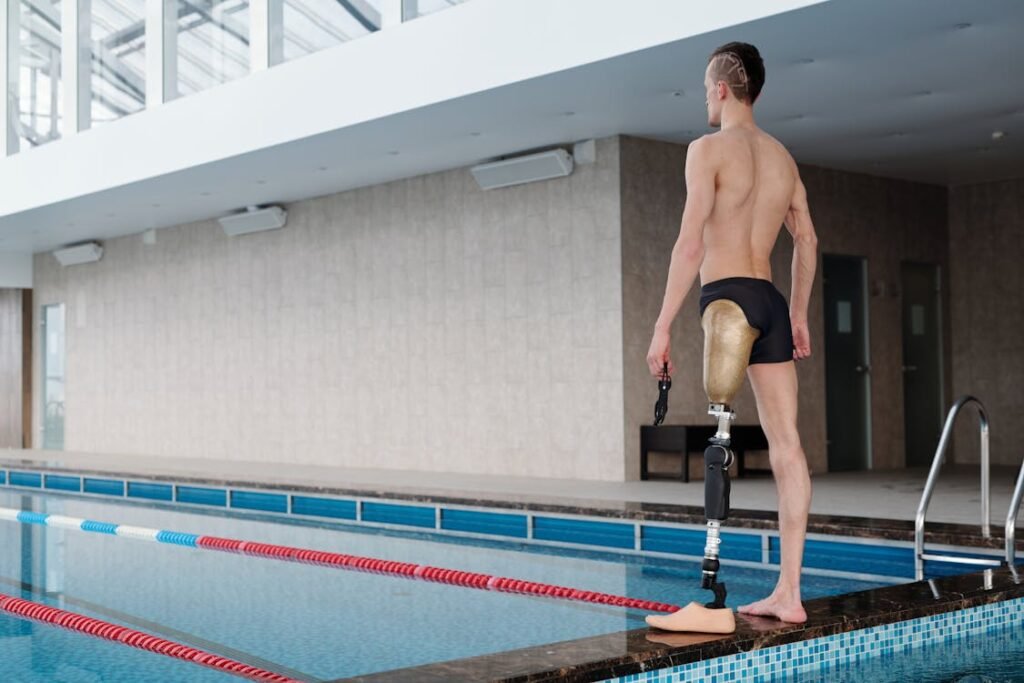
The Future of Bionic Prosthetics: What’s Next?
Bionic prosthetics have already come a long way, but the future holds even more exciting possibilities. As technology continues to advance, researchers and engineers are working toward creating prosthetics that are not only more efficient but also more intuitive and lifelike.
The goal is to make bionic limbs feel so natural that users barely notice a difference between an artificial limb and a biological one. Several groundbreaking developments are set to shape the future of prosthetics, pushing the boundaries of what is possible.
Brain-Controlled Prosthetics for Seamless Movement
One of the most revolutionary areas of prosthetic research is direct brain-machine interfaces. Instead of relying on muscle signals to control a bionic limb, scientists are developing systems that allow users to move their prosthetic simply by thinking about it.
By implanting tiny electrodes in the brain or nervous system, these prosthetics can receive and process neural signals just like a natural limb.
Brain-controlled prosthetics eliminate the lag between intention and movement, making motion feel more natural and effortless.
Some experiments have already shown that users can control individual fingers, perform precise movements, and even experience a sense of ownership over the artificial limb. While this technology is still in the research phase, it has the potential to redefine what bionic limbs can do.
Advanced Sensory Feedback for a Realistic Experience
Current bionic prosthetics focus primarily on movement, but the next step is restoring the sense of touch. Engineers are working on sensory feedback systems that allow users to feel temperature, texture, and pressure.
By integrating artificial nerves into prosthetics, these systems send signals back to the brain, recreating the experience of touch.
Some recent breakthroughs involve using electrical stimulation to activate the nerves in the residual limb. Users with these prosthetics have reported being able to distinguish between soft and hard surfaces, recognize different textures, and even sense pain or heat.
This kind of feedback is crucial for making prosthetic limbs feel like a natural part of the body, improving both function and emotional connection.
Self-Learning AI That Adapts to the User
Artificial intelligence is playing an increasingly important role in bionic prosthetics. The latest prosthetics are equipped with AI-driven systems that learn from the user’s movements and adapt over time.
These systems analyze walking patterns, hand movements, and grip strength to improve responsiveness.
For example, a bionic knee with AI can detect changes in terrain and adjust its motion automatically, allowing users to walk more comfortably on stairs, ramps, and uneven surfaces.
A bionic hand with AI can recognize common gestures and adjust its grip based on past movements. The more the prosthetic is used, the better it understands the user’s habits, making movements more fluid and intuitive.
Future AI-powered prosthetics may even predict movements before they happen. By analyzing brain activity and previous patterns, these limbs could anticipate what the user wants to do and adjust accordingly.
This would make prosthetic control even more natural, eliminating the need for conscious thought when performing everyday tasks.
Energy-Efficient and Self-Powered Prosthetics
One of the main challenges with bionic prosthetics is battery life. Current models require frequent charging, which can be inconvenient for users who rely on their prosthetic throughout the day.
Future prosthetics will incorporate energy-efficient designs that extend battery life while maintaining high performance.
Some researchers are exploring the idea of self-powered prosthetics that generate their own electricity. These systems could use kinetic energy from movement, solar power, or even body heat to charge the prosthetic.
This would eliminate the need for external charging and allow for continuous use without interruptions.
Wireless charging technology is also being developed, allowing users to charge their prosthetic limbs simply by placing them on a charging pad or using specialized clothing that transfers energy wirelessly.
These innovations will make bionic prosthetics more practical for daily use, reducing downtime and improving reliability.
Customization and 3D Printing for Personalized Fit
Every individual has unique needs when it comes to prosthetics, which is why customization is becoming a major focus for future designs. 3D printing technology is revolutionizing the way prosthetics are made, allowing for highly personalized and cost-effective solutions.
With 3D printing, prosthetic limbs can be tailored to fit the exact shape and structure of the user’s body. This ensures better comfort, reduced pressure points, and improved functionality.
Users can also choose different designs, colors, and materials, making prosthetics a more personal and expressive part of their identity.
Some companies are even exploring modular prosthetics that allow users to swap out different components based on their needs. For example, an athlete might use a running blade for sports but switch to a robotic foot for everyday activities.
This level of flexibility will make bionic prosthetics more adaptable and user-friendly.
Greater Accessibility and Affordability
One of the biggest barriers to advanced prosthetic technology is cost. Many bionic prosthetics are expensive, making them inaccessible to a large portion of the population.
However, as technology continues to advance, prices are expected to decrease, making high-quality prosthetics available to more people.
Efforts are being made to integrate bionic prosthetics into public healthcare systems, insurance plans, and government assistance programs.
Organizations around the world are pushing for greater accessibility, ensuring that individuals with limb loss have access to the best possible solutions without financial strain.
Future innovations will focus on making bionic prosthetics not only more advanced but also more affordable.
Open-source designs, low-cost manufacturing techniques, and partnerships between medical institutions and tech companies will help drive down costs and increase availability.
A New Era of Human-Technology Integration
The future of bionic prosthetics is not just about mobility—it’s about redefining the relationship between humans and technology. As these advancements continue, the line between biological and artificial will become increasingly blurred.
Users will not only regain lost function but may eventually experience enhancements beyond human capabilities.
While ethical discussions around enhanced prosthetics are ongoing, one thing is clear: bionic prosthetics are no longer just replacements for lost limbs. They are tools that empower individuals, restore independence, and open up new possibilities for human movement.
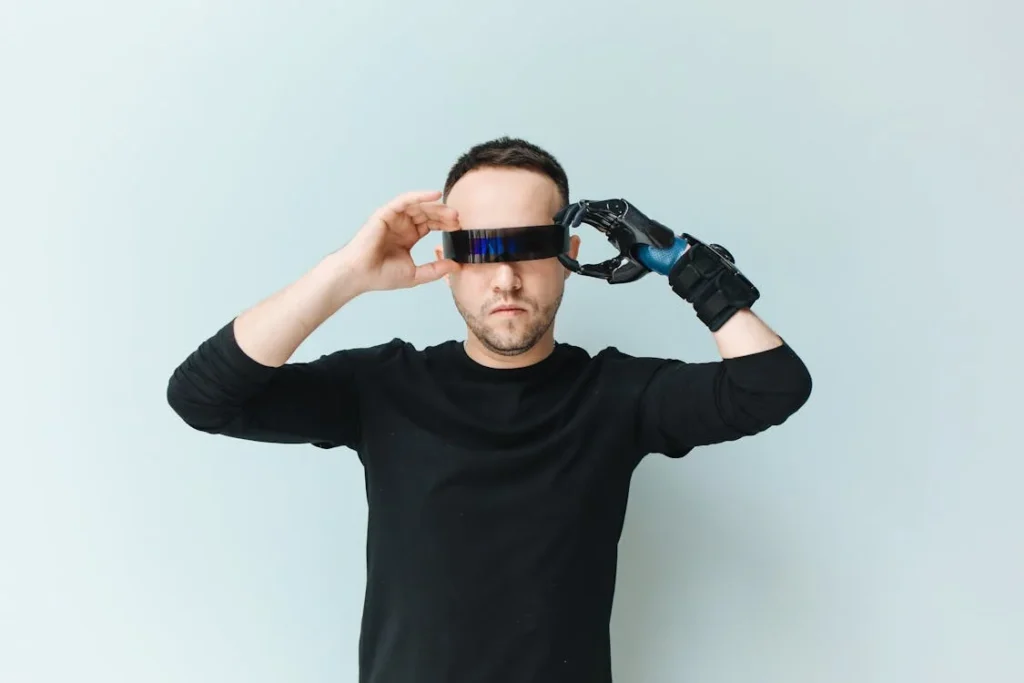
The Role of Bionic Prosthetics in Human Augmentation
While bionic prosthetics are primarily designed to restore lost function, they are also paving the way for something even more groundbreaking—human augmentation.
The idea of using technology to enhance the human body has long been the subject of science fiction, but today, it is becoming a reality.
Bionic limbs are not only helping individuals with limb loss regain mobility; they are also demonstrating how technology can push human capabilities beyond natural limits.
Beyond Restoration: Enhancing Human Abilities
Traditional prosthetics aimed to provide a basic level of functionality, while bionic prosthetics strive to mimic natural movement.
However, researchers and engineers are now exploring how these devices can go beyond restoration to enhance performance. Some bionic limbs are already stronger, faster, and more efficient than biological limbs.
For example, high-tech prosthetic legs used by Paralympic runners can outperform natural legs in terms of speed and energy efficiency.
Unlike biological muscles, which fatigue over time, bionic limbs can maintain peak performance for longer durations. This raises fascinating questions about the potential of bionic technology in professional sports and daily life.
Bionic hands are also advancing beyond human limits. Some models are being developed with 360-degree wrist rotation, allowing users to perform tasks that would be impossible with a natural hand.
Others integrate force-enhancing actuators, enabling users to lift heavier objects without additional strain. These innovations suggest that in the future, bionic limbs might not just replicate lost function but actually enhance human strength, endurance, and precision.
Merging Human Intelligence with Machine Learning
One of the most exciting aspects of bionic prosthetics is the ability to merge human intelligence with machine learning. Unlike natural limbs, which rely solely on the nervous system for movement, bionic limbs can incorporate artificial intelligence to optimize function.
For instance, a bionic arm with AI-driven learning can analyze a user’s movement patterns and suggest improvements for efficiency.
Over time, the prosthetic limb could learn and adapt to specific tasks, making movements faster and more accurate. This kind of integration could revolutionize industries like manufacturing, healthcare, and engineering, where precision and endurance are critical.
There is also the potential for direct brain integration, where a bionic limb and the human brain work together in real-time.
With advances in neural interfaces, the brain could send movement commands directly to the prosthetic, while the prosthetic could send sensory data back to the brain.
This would create a closed-loop system where users experience movement and sensation as if they still had a biological limb.
Bionic Prosthetics in Extreme Environments
Another emerging application of bionic prosthetics is their use in extreme environments where the human body is limited.
Scientists and engineers are exploring how enhanced prosthetic limbs could help humans survive and thrive in harsh conditions, such as deep-sea exploration, space travel, and military operations.
For astronauts, maintaining physical function in microgravity is a major challenge. Traditional muscles weaken over time in space, but bionic limbs could be designed to counteract muscle loss by providing built-in strength and endurance support.
Similarly, deep-sea divers could use bionic limbs that resist high-pressure environments, allowing them to work at depths that would be too dangerous for the human body.
In military and rescue operations, bionic limbs could give soldiers and first responders enhanced mobility, strength, and durability.
A soldier with an AI-powered bionic leg could navigate rough terrain more efficiently, while a firefighter with a heat-resistant bionic arm could carry out rescues in extreme conditions.
These applications show that bionic prosthetics are not just for those with limb loss; they are becoming tools for expanding human capabilities in ways we never imagined.
The Ethical and Social Questions of Bionic Enhancement
As bionic prosthetics continue to advance, they bring up important ethical and social questions. If artificial limbs become stronger, faster, and more durable than natural ones, will people without disabilities choose to replace their biological limbs with bionic alternatives? Should there be regulations on how much enhancement is allowed in sports and daily life?
Some experts argue that bionic augmentation could create a divide between those who can afford advanced prosthetic technology and those who cannot.
If bionic limbs eventually outperform natural limbs in key areas, this could lead to a competitive advantage for individuals with access to such enhancements.
Sports organizations, governments, and medical professionals will need to establish guidelines to ensure fairness and accessibility.
There are also concerns about how society will perceive individuals with advanced prosthetics.
Will people with bionic limbs be seen as “enhanced” humans, and how will this affect workplace opportunities, social interactions, and personal identity?
These are questions that researchers, ethicists, and policymakers will need to address as bionic technology becomes more integrated into everyday life.
A Future Where Technology and Biology Coexist
Despite these challenges, the future of bionic prosthetics is incredibly promising. What started as a means of restoring lost function is now evolving into a technology that could redefine human potential.
Whether it’s through enhanced strength, AI-driven learning, or seamless brain integration, bionic prosthetics are shaping a world where technology and biology coexist in harmony.
At Robobionics, we are committed to pushing the boundaries of prosthetic innovation. Our goal is to ensure that bionic technology not only restores mobility but also empowers individuals to achieve more than they ever thought possible.
As advancements continue, one thing is clear—bionic prosthetics are no longer just about replacing what was lost; they are about unlocking new possibilities for human movement and beyond.
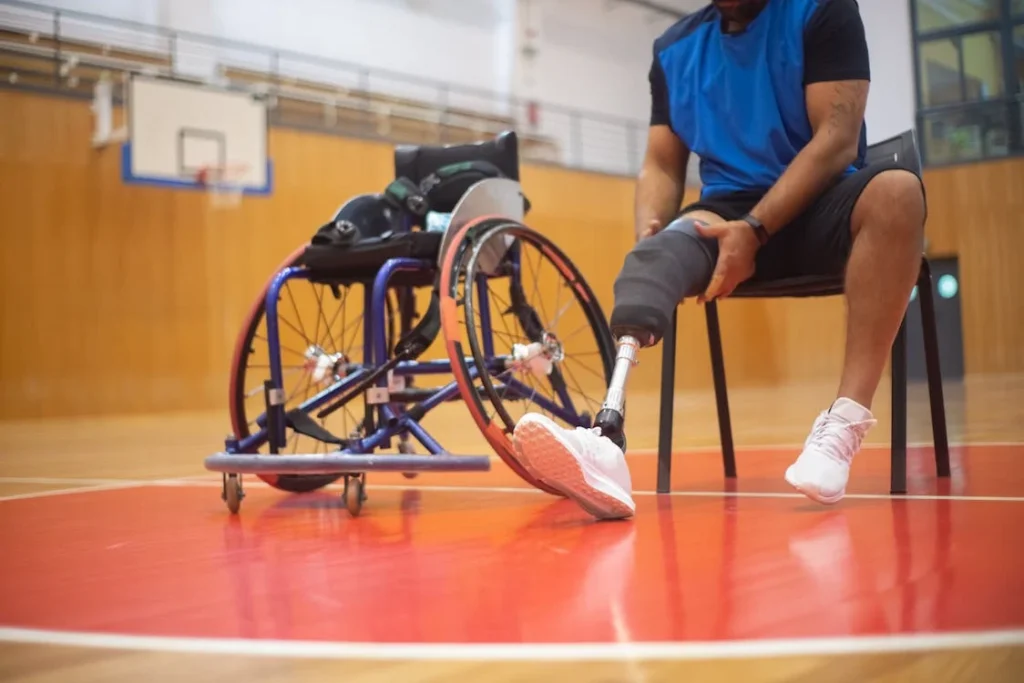
Conclusion
Bionic prosthetics have moved beyond simply replacing lost limbs—they are now redefining what the human body can achieve. With advancements in AI, brain-controlled interfaces, sensory feedback, and adaptive movement, these prosthetics are mimicking natural motion better than ever before. They are not only restoring independence but also enhancing performance in ways once thought impossible.
The real-world impact of bionic limbs is clear. Users can walk, grip, and interact with their environment in ways that feel seamless and intuitive. Athletes, professionals, and everyday individuals are benefiting from technology that adapts to their needs, making movement more fluid and natural. Looking ahead, future innovations in neural integration, energy efficiency, and AI-driven learning will push bionic prosthetics even further—blurring the line between biology and technology.
At Robobionics, we are dedicated to making these life-changing advancements accessible to as many people as possible. Whether you’re seeking a bionic limb for mobility, work, or sports, we’re here to guide you. Book a free consultation today and take the next step toward a more natural and empowered future.



